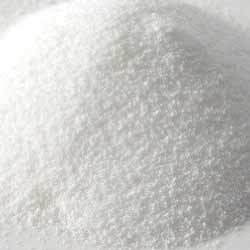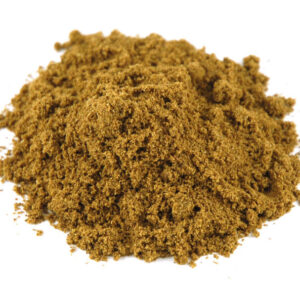Description
Coconut is a mature fruit of the cocos nucifera palm. It is one of very versatile and indispensable food item for millions of inhabitants in South and South-East Asia, and Pacific islands. It is one of the most sought-after ingredients in the kitchen since it employed in almost each and every recipe prepared in these parts of the world.
Cocos nucifera belongs to the large Palmaceae family of palm trees. Coco palm grows well under tropical climates. The palm requires moist, sandy, well-drained soil and flourishes well all along the saline-rich coastal regions.
The coconut palm is an un-branched, erect, tall-growing tree that may reach more than 100 feet in height and has a lifetime of about 75 to 100 years. Once planted, it may take about 4-5 years to begin their first produce, and often, quite longer time in some species. Several hundred species of the coconut palms grown all over the tropics, and their taste of meat and flavor of water thus may vary according to saline content of the soil, distance from sea-shore, amount of rain-fall, etc.
In a season, a single coconut palm may yeild 20-150 mature nuts. The fruit is almost spherical to oval in shape and measure between 5-10 inches in width. Its rough outer husk is light green, which becomes dry and turn gray as the nut matures. The husk (exocarp) is about 1-2 inches in thickness and made of tough fibers. Underneath the husk, there is a woody shell enclosing inner edible meat (kernel-endosperm). Recently harvested mature fruits contain some amount of sweet water inside its central hollow cavity surrounded by the white meat (endosperm). The fruit with its shell, kernel, and water together constitutes a “coconut” in the market.
Health benefits of coconut
- Coconut is a very versatile and indispensable food item for most people under the tropical belt. It is a complete food rich in calories, vitamins, and minerals. A medium-size nut carrying 400 g edible meat and some 30-150 ml of water may provide almost all the daily-required essential minerals, vitamins, and energy of an average-sized individual.
- 100 g kernel consists of 354 calories. Much of this comes from the fats and protein. Although, its meat is disproportionately high in saturated fats on comparison to other common edible nuts, coconut has many bioactive compounds that are essential for better health.
- The important saturated fatty acid in the coconut is lauric acid (1:12 carbon fatty acid). Lauric acid increases good-HDL cholesterol levels in the blood. HDL is a high-density lipoprotein, which has beneficial effects on the coronary arteries by preventing vessel blockade (atherosclerosis). Physicians recommend high HDL to total cholesterol levels in the blood for the same reason.
- Coconut water is a very refreshing drink to beat tropical summer thirst. The juice is packed with simple sugar, electrolytes, minerals, and bioactive compounds such as cytokinin, and enzymes such as acid phosphatase, catalase, dehydrogenase, peroxidase, polymerases, etc. Altogether, these enzymes aid in digestion and metabolism.
- Coconut oil extracted from dry kernel (copra) is an excellent emollient agent. It is used in cooking, applied over scalp as hair nourishment, employed in pharmacy and in medicines.
- Research studies suggest that cytokinins (e.g., kinetin and trans-zeatin) in coconut water showed significant anti-ageing, anti-carcinogenic, and anti-thrombotic effects.
- The kernel is an excellent source of minerals such as copper, calcium, iron, manganese, magnesium, and zinc.
- It is also a very good source of B-complex vitamins such as folates, riboflavin, niacin, thiamin, and pyridoxine. These vitamins are essential in the sense that body requires them from external sources to replenish.
- Coconut meat and water contain a very good amount of potassium. 100 g of fresh meat contains 356 mg% or 7.5% of daily required levels of potassium.
Selection and storage
Mature coconuts can be readily available round the year in Asian stores in the USA. You may find partially husked, processed kernel in cans, wholesome totally dried (copra) in vaccum packs, coconut milk, cream, dried-powder (desiccated), etc., in these stores. Fresh tender nuts for refreshing drink or in tins/cans can also be found in these stores.
Coconut milk is available in tins/cans or as a milk-powder in the markets. If using as powder, reconstitute it with cold water following steps/instructions described on the packet.Coconut is a very stable fruit. Dry nuts in the husks can be stored for months in cool, dry, and humid-free place. However, once cut open, fresh mature meat may deteriorate rather quickly if kept open for few hours at room temperature. Its water and meat contain simple sugars which attract attacking fungus as well as bacteria. Cut-opened raw kernel and grated coconut should be placed inside the refrigerator to prevent decaying.
Preparation and serving tips
Here are some serving tips:There are several methods in practice to cut-open the whole coconut fruit. At domestic level, an expert person with enough skills in plying its tough outer husk should only be employed in this task. The nuts are usually husked with the help of huge machines in the industries. At the household, it is plied using sharp sickle, portion by portion to expose underneath nut with the spherical to ovals shaped hard shell. In India and other Asian countries, this husked nut is broken by hitting it against the hard surface with great force to crack open. Its water is usually discarded. Then its meat is separated from its attachment to shell using a sharp spatula or knife. The meat is cut into chunks, slices or grated using special household knife, or grater.
- Its slices or chunks are eaten as a snack. The kernel can be eaten in many ways. In one of the special recipes in South India where small slices or grated coconut is mixed with jackfruit slices, honey, sugar, and banana and served as a dessert.
- Finely grated and dried (desiccated) coconut powder is used in the preparation of variety of savory dishes in India and other Asian region. Coconut chutney is a thick paste prepared by grinding together grated coconut, roasted peanuts, green or red chilli peppers, mustard seeds, curry leaves, garlic, and salt and used as a dip with rice cake (idli), poori (puffed fried thin bread) etc.
- Dried (desiccated) coconut powder is found a special place in mouth-watering sweet dishes like burfi, granola bars, cake, cookies, chocolate, pies, custard (kheer) etc., in almost all parts of South Asia, and East Asian regions.
- Fresh tender coconut water can be made as special refreshing drink by adding lemon, mint leaves, orange zest, etc.
- Coconut milk is added to flavor variety of food preparations. Fish and seafood curries cooked in milk is one of a special recipe in many parts of Indonesia, Philippines, India (Kerala,), Malaysia and Sri Lanka. In Indonesia and Malaysia, rice is steamed in milk with herbs and spices (nasi uduk) and served with chicken or beef curries.
Safety profile
Coconut is a very healthy ingredient that can be used safely as food. There are no reported allergic reactions of any sort notified so far following its consumption. Its sweet delicious kernel is not only cherished in healthy but considered safe and nutritious in pregnancy, infants as well as in diseased conditions




Reviews
There are no reviews yet.